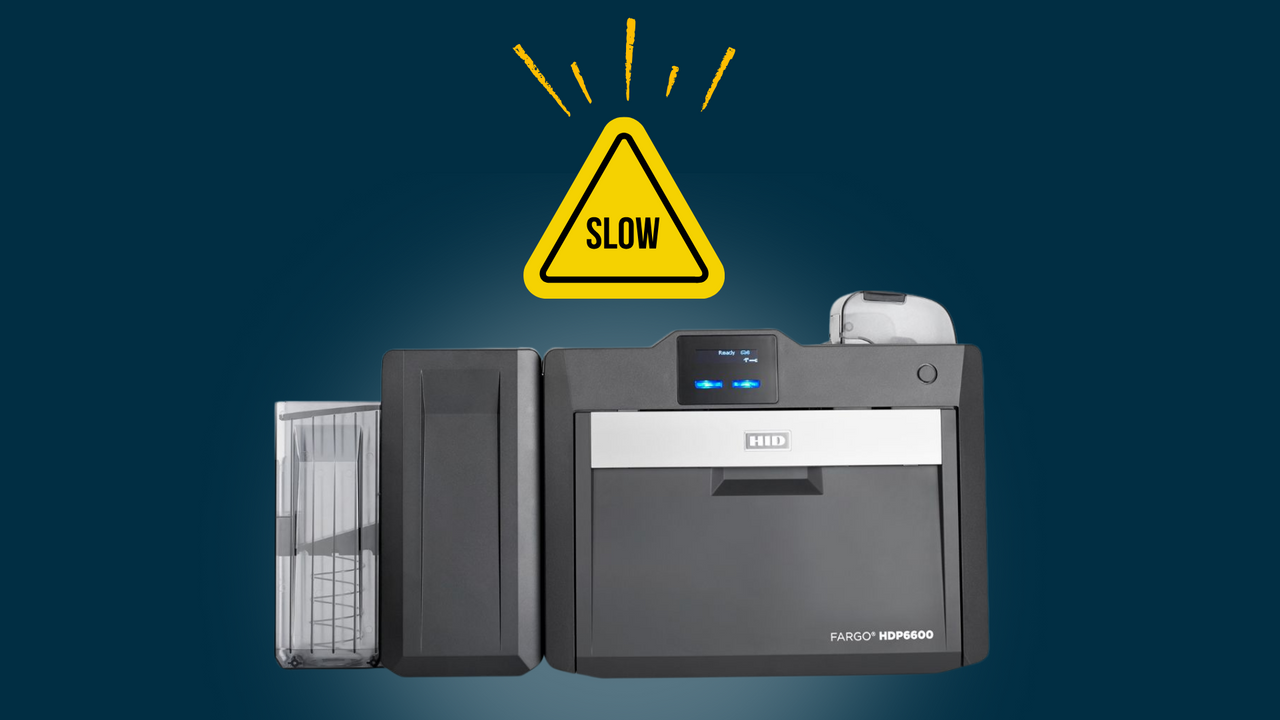If your ID card printer feels like it’s crawling—taking far too long to produce each card—it can be frustrating, especially when you have a stack of badges waiting to be printed. While some slowdown is normal depending on print settings and card complexity, significant delays usually point to fixable issues.
In this blog, we’ll break down the common reasons why your ID card printer might be running slowly, and what you can do to speed things up.
1. High-Quality Print Settings
One of the most frequent causes of slow printing is simply that your printer is set to produce cards at the highest possible resolution or quality mode.
- High DPI (dots per inch): Printing at 600 DPI or with advanced color depth takes more time than standard 300 DPI.
- Full-color with overlays: Printing edge-to-edge, double-sided, or with security features like UV images requires extra passes.
Tip: If ultra-high resolution isn’t critical for your cards, try lowering the print quality or disabling advanced overlays in your printer driver settings.
2. Double-Sided or Laminated Cards
If you’re printing dual-sided cards, your printer must flip the card automatically to print the back—adding extra time. Similarly, lamination modules apply protective films or holograms in an additional pass.
Tip: If the back only needs black text, consider using a single-color K ribbon for the reverse side, which prints faster.
3. Complex Card Designs
Cards loaded with full-bleed backgrounds, high-resolution logos, gradients, and photo-heavy designs naturally take longer to process and print.
Tip: Simplify graphics where possible, or at least optimize images to the printer’s native DPI to prevent unnecessary processing.
4. Slow Data Transfer from Computer
Your printer relies on data sent from your workstation. If the connection is slow or the computer is under heavy load:
- USB vs. Ethernet: USB is fine for single stations but can bottleneck if many print jobs are queued.
- Old PCs: Slower processors can struggle with preparing large print files.
Tip: Ensure you’re using the latest drivers and firmware, and if printing in a networked environment, consider Ethernet for faster, shared access.
5. Firmware or Driver Issues
Outdated printer firmware or old drivers can cause inefficiencies and compatibility issues, slowing print operations.
Tip: Visit your printer manufacturer’s website (like Evolis, HID Fargo, Zebra, or IDP) and update to the latest firmware and drivers.
6. Printer Maintenance Overdue
A printer that needs cleaning often runs slower—rollers may slip or fail to grip the card properly, causing hesitations.
Tip: Run a cleaning cycle with approved cleaning cards. Most manufacturers recommend cleaning after every 1,000 prints (or sooner if in dusty environments).
7. Heavy Use and Wear
Finally, if your printer is older or has already produced thousands of cards, mechanical wear can slow processes like card feeding or printing.
Tip: Have it serviced by an authorized technician. Sometimes a worn roller or printhead replacement can restore original speed.
Speed Isn’t Everything
It’s important to remember that your printer’s rated speed—like 150 cards/hour—usually refers to simple, single-sided, edge-restricted prints without overlays. If you’re printing high-security cards with dual-sided full-color and lamination, longer times are perfectly normal.
Get Help Optimizing Your Printer
Still wondering, “Why is my ID card printer so slow?” We can help troubleshoot your specific model, from updating software to recommending efficient print setups that save time.
Contact us today to discuss your printer, or to explore faster models designed for high-volume needs.


